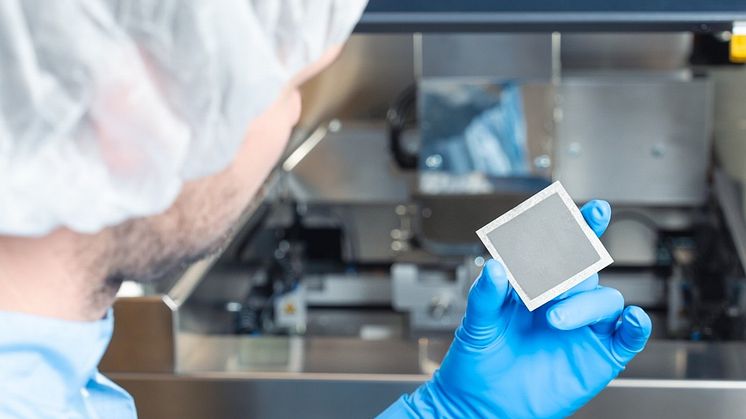
News -
Fraunhofer ISE Demonstrates Ultra-Fine Transport Layers for Electrolyzers
The Fraunhofer Institute for Solar Energy Systems ISE has made significant progress in the manufacture of components for PEM electrolysis. Using a screen printing process, it has succeeded in producing ultra-fine porous transport layers (PTL) made of titanium. This innovation helps to significantly reduce the material costs for electrolysers, in particular by reducing the use of expensive catalyst materials such as iridium.
PEM electrolysis is considered one of the most promising technologies for green hydrogen production, as it works with high current density and can adapt flexibly to the fluctuating energy supply from renewable sources. A key component of these electrolyzers are the PTLs, which are responsible for transporting water and gases to the catalyst-coated membrane. Optimizing them can significantly improve both the performance of the electrolysis and the cost structure.
Fraunhofer ISE has therefore focused on the development of fine-pored titanium layers (microporous layers, MPL), which are applied between the PTL and the catalyst-coated membrane. These layers are characterized by a particularly low surface roughness, which improves the bonding of the catalyst. As a result, the iridium loading of the catalyst layer can be significantly reduced, while at the same time enabling the use of thinner membranes, which reduces ohmic losses.
Fraunhofer ISE uses the screen printing process to produce these MPL layers, which allows precise control of the layer thickness and structure. The institute was able to draw on its many years of experience in screen printing technology in the field of photovoltaics. A series of tests showed that very fine layers of around 20 µm thickness could be printed using this process, reducing the surface roughness of the PTL by 46 %. This significantly improves contact with the catalyst layer and helps to save valuable materials.
With this successful proof-of-concept, Fraunhofer ISE is now looking for industrial partners to further optimize the microporous layers and adapt them to specific requirements.
